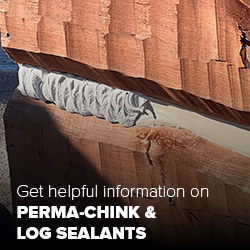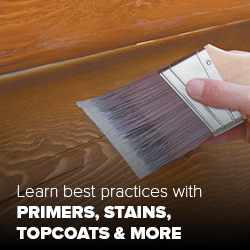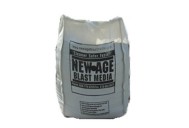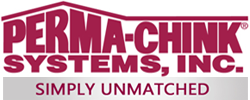 Perma-Chink Systems, Inc
Log & Timber Home Care Experts
Perma-Chink Systems, Inc
Log & Timber Home Care Experts
Michael
Perma-Chink Systems namesake product, Perma-Chink, is the leading sealant for log homes. We've extended the same performance and quality of Perma-Chink in our other sealants, Energy Seal and Woodsman.
Below are our Tech Tips for all our sealants, including our Chink Paint, which provides an excellent solution to refresh old, but sealed, chinking.
Sealants Application Guide
Perma-Chink Sealant Tech Tips
Repairing Perma-Chink | ![]() Download PDF
Download PDF
Protecting Uncured Chinking | ![]() Download PDF
Download PDF
Energy Seal Tech Tips
How to Apply Energy Seal And Woodsman | ![]() Download PDF
Download PDF
Sealing with Log Gap Caps and Energy Seal | ![]() Download PDF
Download PDF
Sealing Log Siding | ![]() Download PDF
Download PDF
Check Mate 2 Tech Tips
The Color of Check Mate 2 | ![]() Download PDF
Download PDF
How to Seal Checks In Logs & Siding | ![]() Download PDF
Download PDF
Chink Paint Tech Tips
Chink Paint Versus Chinking | ![]() Download PDF
Download PDF
Chink Paint (Textured & Smooth) | ![]() Download PDF
Download PDF
General Sealant Application Tech Tips
Calculating Linear Feet | ![]() Download PDF
Download PDF
Calculating Square Footage | ![]() Download PDF
Download PDF
Application Temperatures | ![]() Download PDF
Download PDF
Hot Weather Applications | ![]() Download PDF
Download PDF
Why Use Backing Materials | ![]() Download PDF
Download PDF
Drying and Curing Times | ![]() Download PDF
Download PDF
Removing Old Caulk | ![]() Download PDF
Download PDF
Equipment & Tools Tech Tips
About Bulk Loading Guns | ![]() Download PDF
Download PDF
Energy, Environmental, and Misc. Tech Tips
The Thermal Efficiency of Chink Joints | ![]() Download PDF
Download PDF
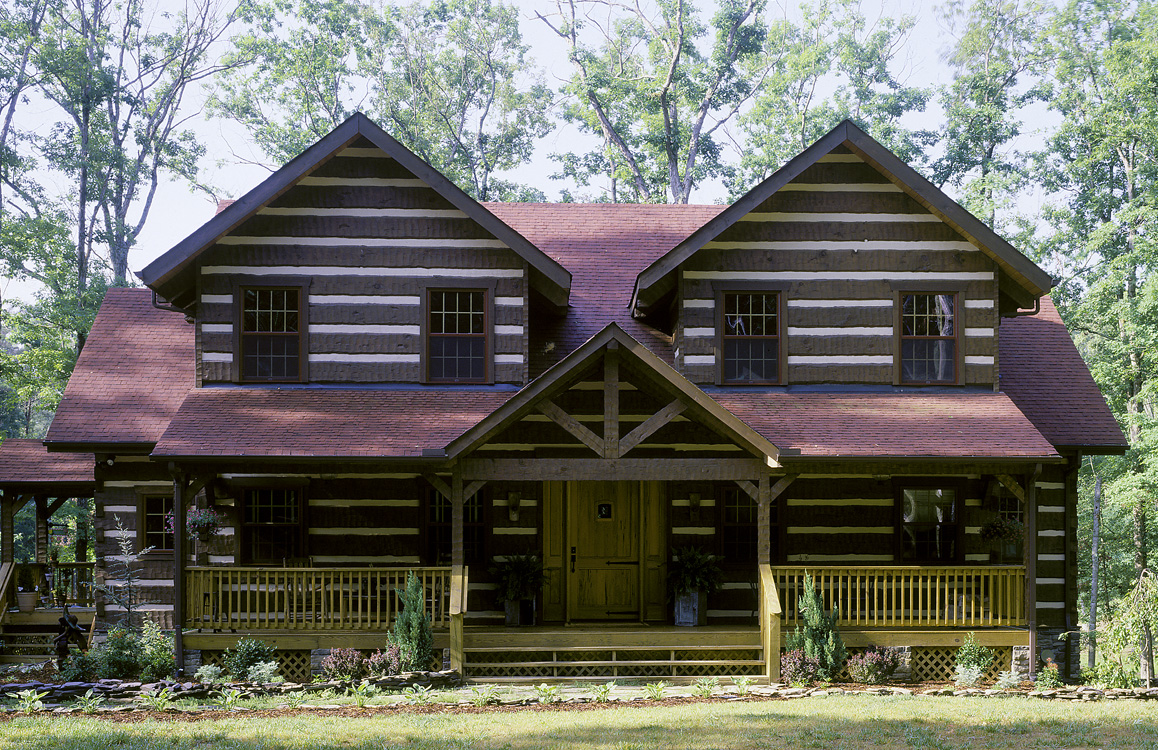
Is Chinking Cosmetic or a Sealant?
Perma-Chink has evolved into an elastomeric compound that has been specifically designed for use in log home sealing applications. Perma-Chink adds to the overall integrity of the structure by not only preventing water and air from entering the home, but also adding greatly to the overall effectiveness of the entire building envelope - keeping heat and air from escaping during the heating and cooling seasons. While it looks fantastic when properly applied, Perma-Chink is most definitely a sealant first and a cosmetic product second.
It should also be mentioned that a properly applied chinking compound will help keep out unwanted insects and other nuisance pests. In the case of a “chinkless” style home, many homeowners often desire to add a chink line for cosmetic purposes to differentiate the home from a smooth-sided home. Or oftentimes on a full log wall system Perma-Chink is used as a contrast in the color of the chosen finish.
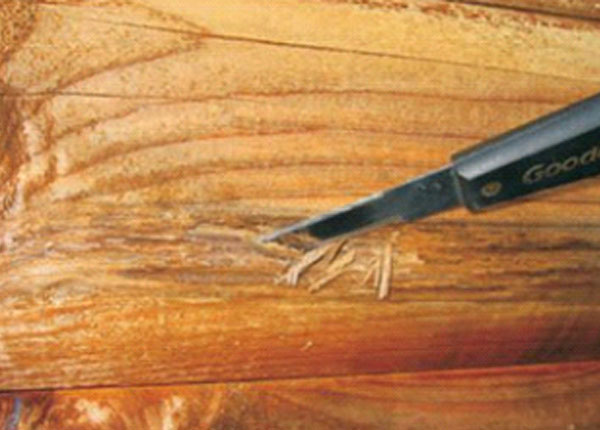 More wood is replaced each year because of decay damage than all other factors combined! Commonly called rot, wood destroying fungi need three things to survive: air, water, and food. Since we can't eliminate air and their food is the wood in our homes, the only mechanical control mechanism available to us is the elimination of water. Water is the enemy of wood! Although we've all heard the term "dry rot," dry wood will not rot!
More wood is replaced each year because of decay damage than all other factors combined! Commonly called rot, wood destroying fungi need three things to survive: air, water, and food. Since we can't eliminate air and their food is the wood in our homes, the only mechanical control mechanism available to us is the elimination of water. Water is the enemy of wood! Although we've all heard the term "dry rot," dry wood will not rot!
There are three basic categories of wood-destroying fungi: soft rot, brown rot and white rot. Soft rot fungi are typically found in wet wood showing the first signs of decay. Wood infected with soft rot can become quite soft and spongy. Other than the softness of the wood and perhaps discoloration of the surface, there may be no apparent signs of a soft rot infestation.

In many areas of the country when cool, fall days arrive, Asian lady beetles (ladybugs), Harmonia axyridis, and boxelder bugs, Boisea trivittatus, congregate on exterior walls. They typically choose the south and west facing walls since these walls are the warmest. Once on the wall they look for nooks, crannies and other dark openings where they can hibernate over the winter. Log checks, gaps between butt joints and corner openings provide ideal wintering sites for these insects. If any opening leads to the inside of the home, they can become a real nuisance, especially if they enter in large numbers. An effective method to handle them inside is with a vacuum cleaner. Spraying them with pesticides is unnecessary and unhealthy.
The best way to keep them out of your home is to block their entry points with a sealant, screening and weather stripping. Using high quality sealants like Energy Seal™ or Woodsman™ will help prevent these and other insects from entering your home for years to come. When sealing, pay special attention to window and door frames. That's where openings typically appear as a home settles and logs season.
Perma-Chink Systems have the best stains for log and timber homes. While we tend to call our stains "finishes," most consumers are used to the phrasing of "wood stain." Why the difference? The quick answer is that stains permeate the wood, while finishes form a film over the surface, protecting the wood. If you want to know more about the difference, our tips below can answer your questions.
The Tech Tips are grouped below by how our system works. Like most things in life, success is determined by a strong foundation. So the first section contains information on getting your log or timber home ready for the finish of your choosing. Following the surface prep section, we've consolidated information about our finishes for both exterior and interior. The final section is dedicated to known issues with log and timber homes that all homeowners have to deal with, regardless of which finish they choose.
Wood Finishes Application Guide
Tips For Surface Prepping, Cleaning, & Washing
Tech Tips About Stains & Finishes
Tech Tips For Exterior Finishes
Tech Tips For Interior Finishes
TECH TIP |
|
TECH TIP |
|
| How to Apply Lifeline Interior | Applying Sure Shine | ||
| Interior Color Coats & Topcoats | Finishing Floors |
Tech Tips For Moisture, Mold, & Wood Issues
TECH TIP |
|
TECH TIP |
|
| What is Mill Glaze? | About Water Stains | ||
| About pH | About Moisture Content | ||
| About Moisture Meters | About Mold & Mildew | ||
| About Resin Bleed | Preventing Mold Growth |
Perma-Chink Systems has a full line of wood cleaners designed to clean, restore, and prepare your home for maintenance. We cover the basic cleaning, as well as how to handle known wood issues like resin bleed.
 Most people are accustomed to spring cleaning, but if you are a home owner, you know that your house needs attention year-round. Fall maintenance is much like spring house-cleaning, but more preventative and less “cleaning.” And it’s much easier to do it now rather than wait until the weather turns nasty.
Most people are accustomed to spring cleaning, but if you are a home owner, you know that your house needs attention year-round. Fall maintenance is much like spring house-cleaning, but more preventative and less “cleaning.” And it’s much easier to do it now rather than wait until the weather turns nasty.
Have you noticed your heating bill increasing year after year? It could be that your home has cracks that let heat escape, costing you money. Seal up cracks and seams before the weather turns cold and it’s too late to do anything about it.
Specifically designed for milled and scribed log homes, Energy Seal is a revolutionary product offering superior binders that effectively seal all interior and exterior gaps and cracks.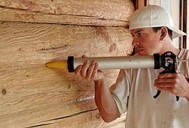
Energy Seal is a 100% acrylic polymer sealant formulated to provide a long-lasting and resilient barrier for any chinkless log home. Since logs constantly twist, turn, swell, and shrink during the life of a log home, annoying gaps can appear. These gaps promote the retention of moisture, which can lead to log decay and damage, as well as seepage of air and water.
What to do if your log home was flooded?
 Log homes are actually more durable than traditional homes, and are more likely to survive natural disasters, including flooding. The clean-up and repair of a log home after flooding is also much easier; follow these steps...
Log homes are actually more durable than traditional homes, and are more likely to survive natural disasters, including flooding. The clean-up and repair of a log home after flooding is also much easier; follow these steps...
All About Linseed Oil - And Why It's No Good For Wood
We occasionally get calls about the exterior of a home that has turned black.
Almost without fail it's the result of using an oil-based stain that contained linseed oil.
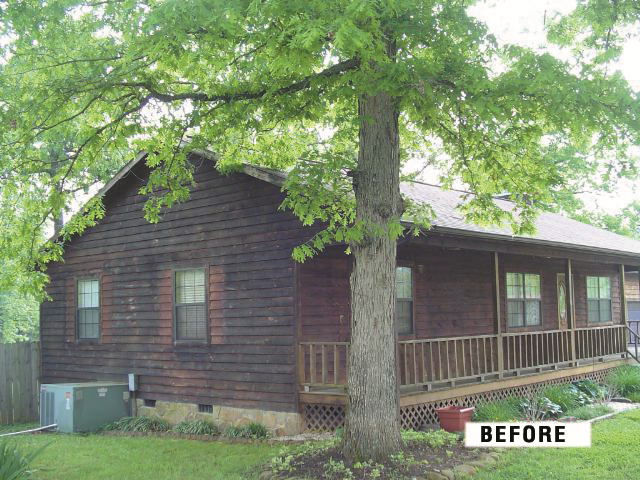
Linseed oil is a yellowish oil derived from the dried seeds of flax plants, and is also known as flax seed oil. Linseed oil is used as a carrier in many brands of oil-based paints and stains. Since linseed oil is organic, many varieties of mold fungi thrive on it. Over time mold can proliferate to point where the coated surface can turn dark brown to black. One way to tell if the darkening is due to mold rather than UV damage is inspecting areas protected from direct sunlight like under eaves and overhangs; it will be the same dark color as the rest of the wall.
New Age Blast Media Available Sizes
Call 1-800-548-3554 to Order
Features
- Made from recycled glass
- Superior to corn, walnut, sand or soda media

